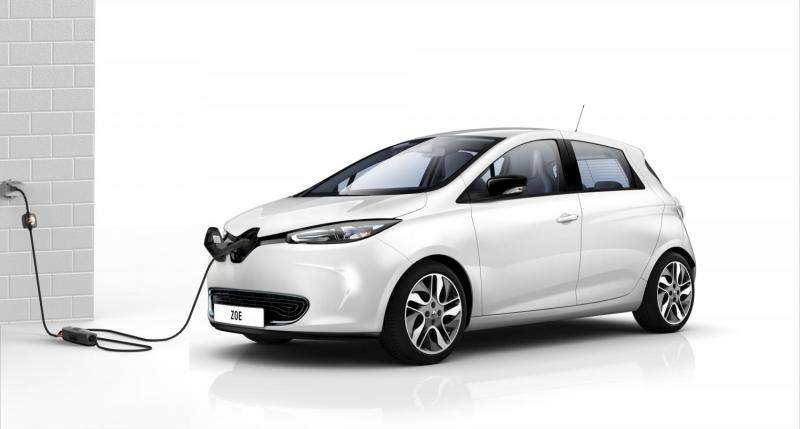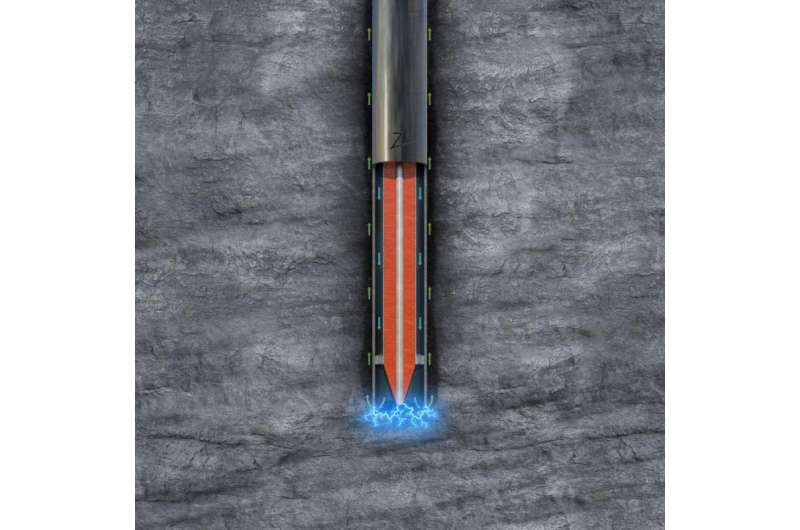Probing Mars, charging cars

Engineers developing a drill for probing Mars, the Moon and asteroids have created the world's first portable charger to power up electric cars anywhere, anytime.
Drawing on the same voltage as a vacuum cleaner, the charger can be plugged into any household socket without blowing a fuse.
The key lies in the tiny transformer, similar to the box on your laptop cable, which converts power from the grid to maintain a stable supply and cut charging times.
Norwegian company Zaptec are also developing a space drill under ESA funding, with the transformer powering a plasma drill for slicing through rock.
"Rotary drills are inefficient in space," points out Zaptec's CEO, Brage Johansen. "They suffer friction in the borehole and require heavy equipment."
ESA is funding Zaptec's feasibility study to assess if their plasma Zapdrill is more effective or will drill deeper in our search for life on other planets.
"Right now we're scratching the surface," explains ESA's Sanjay Vijendran. "With today's technology we can go down about 2 m for missions such as our ExoMars rover. But we want to get to at least 10 m with the same size drill.
"We believe Mars might have underground water which could potentially harbour life, but so far we've not had the technology to explore deep enough."
Space scientists have been looking for a better way and the answer might lie in a flash of lightning.
Drilling with a lightsabre

Plasma is the hot, electrically charged gas that powers the Sun and constitutes most of our Universe. On Earth it manifests as lightning, electrical sparks and the auroras over our poles. In its human-made form, plasma provides the light in fluorescent tubes and now the cutting edge of a space drill.
"The plasma drill is the closest thing to cutting rock with a lightsabre," smiles Brage. "Our drill head produces small bolts of lightning 1–5 cm long that pulverise the rock from within."
This lightweight drill requires no weighted bits or heavy generators. "On Mars we have only 100 W available and we can run the whole system below that using solar power and small batteries."
Engineers have been crushing stone in laboratories with 'lightning' for half a century but only recently has progress in microelectronics enabled them to develop a drill.
Zaptec's innovation lies in the compact transformers that provide the voltage for the plasma spark, thanks to advanced cooling techniques and miniaturisation.
"We realised that the same transformers we were developing for the space drill could also make the best chargers for electric cars," says Brage.
"Zaptecs reuse of their special space technology to power a plasma drill on Mars to charge electric car batteries is a good example of how developments in our European space programmes can help other industrial sectors," said Fredrik Fjellså from Prekubator TTO, the Norwegian partner of ESA's Technology Transfer Programme network of technology brokers.
"This Zaptec space technology will be a great help for the growing use of environmental friendly electric cars."

Zaptec has an agreement with Renault, who will be rolling out the portable charger for their Zoe customers in Norway from early 2016.
Juice up anywhere
"Norway is Europe's biggest market for electric vehicles but the grid is different from the rest of Europe," explains Renault's Philippe Dupuy. "The car doesn't always recognise the quality of the electricity and could refuse to charge."
The space chargerensures electricity from the grid is always acceptable to the vehicle and is safe. "Drivers can plug into any socket along their journey, never having to worry about getting stranded without power."
At home, new Zoe owners can use the cable without installing a wall box, giving them 10 A in a regular socket and 16 A on a dedicated home socket.
"It's like the smartphone of today compared with the mobile phone of the 1980s," contemplates Brage. "Today's car chargers are clumpy and impractical, weighing over 100 kg. We've got ours down to 2 kg and we're very proud of that."
Thanks to their experience in space, Zaptec have created power electronics that will almost certainly transform the electric car and might just help us find life on Mars.
Provided by European Space Agency




















